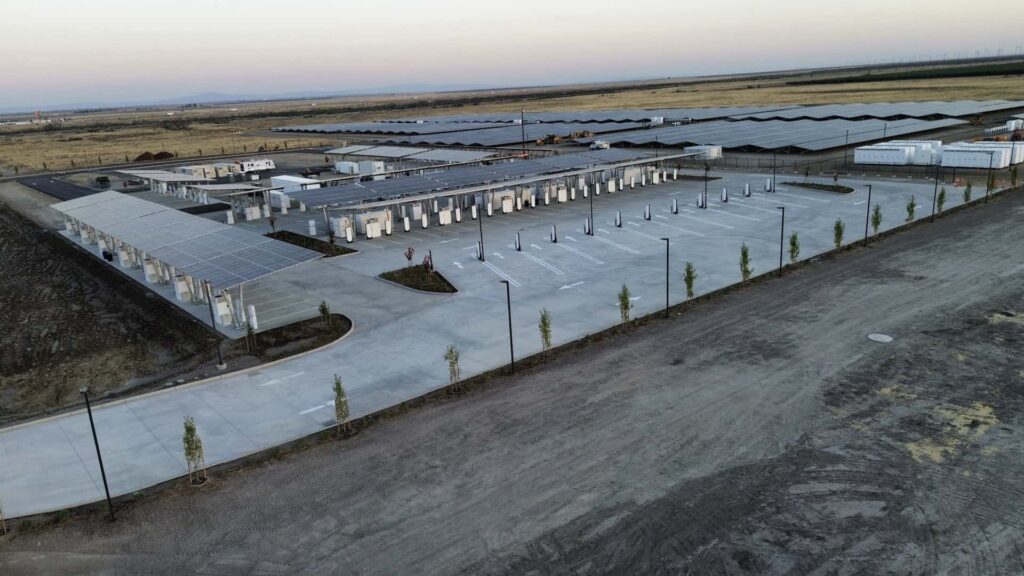Tesla has recently unveiled its largest Supercharger station in the world, named Project Oasis, located in Lost Hills, California. With 84 operational stalls currently in place, the station is completely powered by solar energy and is not connected to the electrical grid. By the end of this year, when all 168 Superchargers are online, it will officially become the largest Tesla charging site globally.
The station boasts a solar farm generating 11 megawatts of energy, stored in 10 Megapacks, which are large stationary lithium-ion batteries for energy storage. Each Megapack has a capacity of 3.9 megawatt-hours, allowing for sustainable, zero-emission driving with hundreds of charging cycles daily.
Despite Tesla’s recent charging team layoffs in 2024, the company continues to make progress in the charging infrastructure space. The Lost Hills Supercharger station is a prime example of utilizing renewable energy sources effectively. The site’s dependence on solar power ensures operational continuity even during power outages.
The station’s construction was completed in just eight months, a remarkable feat in the industry. With around a dozen pull-through stalls for towing vehicles, convenience is a priority at this site. The Barstow Supercharger, currently the largest operational in the U.S., will soon be overshadowed by the Lost Hills site.
Tesla’s vast Supercharger network, with almost 2,700 locations in the U.S. and nearly 32,000 stalls, plays a crucial role in promoting EV adoption. As the company continues to expand its charging infrastructure, range anxiety and charging concerns among EV owners are expected to diminish.
In conclusion, Tesla’s dedication to enhancing its charging network, exemplified by the Project Oasis Supercharger station, is a significant step towards a sustainable future of transportation. The integration of solar power, innovative energy storage solutions, and rapid station deployment highlights Tesla’s commitment to accelerating the transition to electric vehicles.

